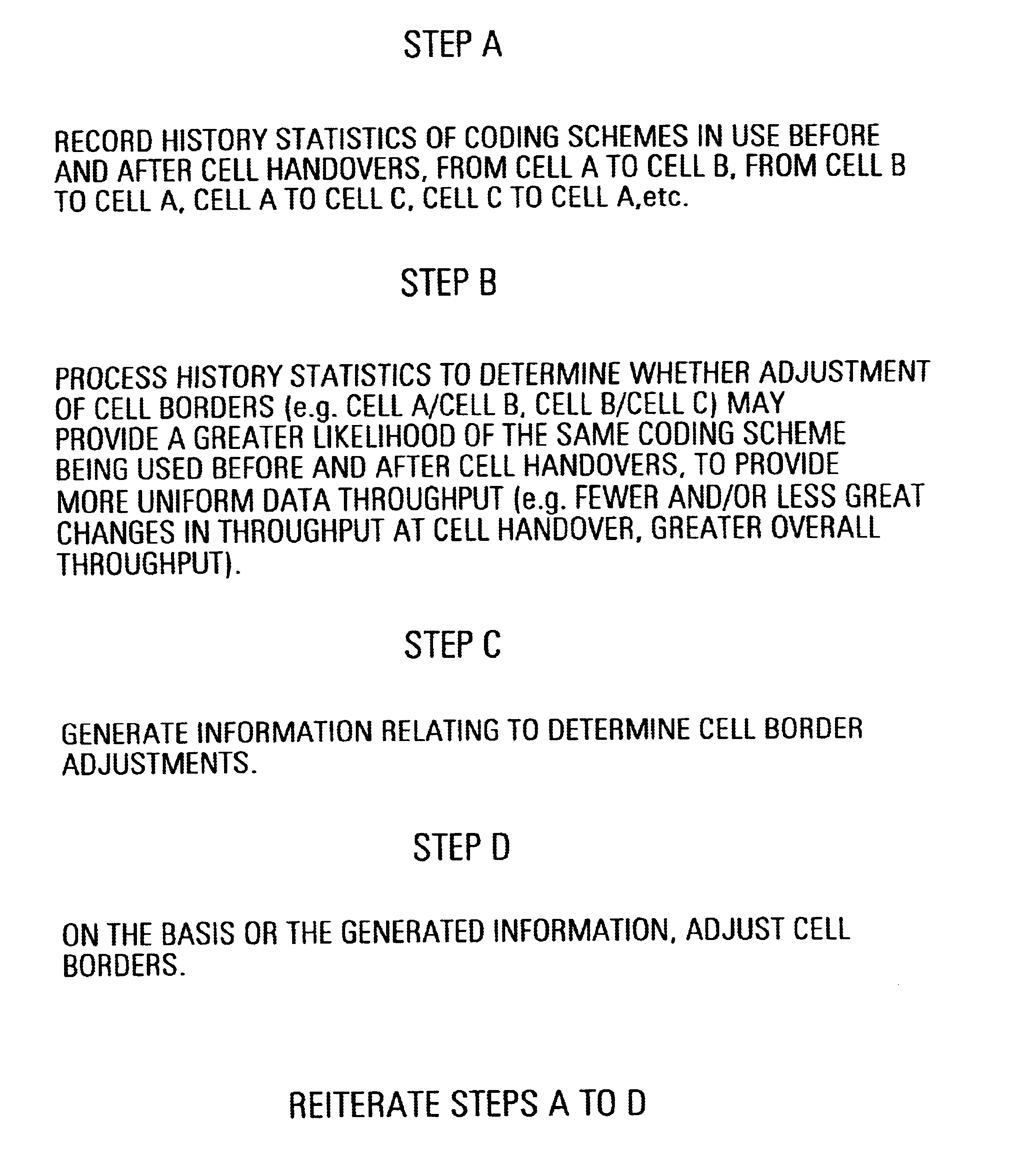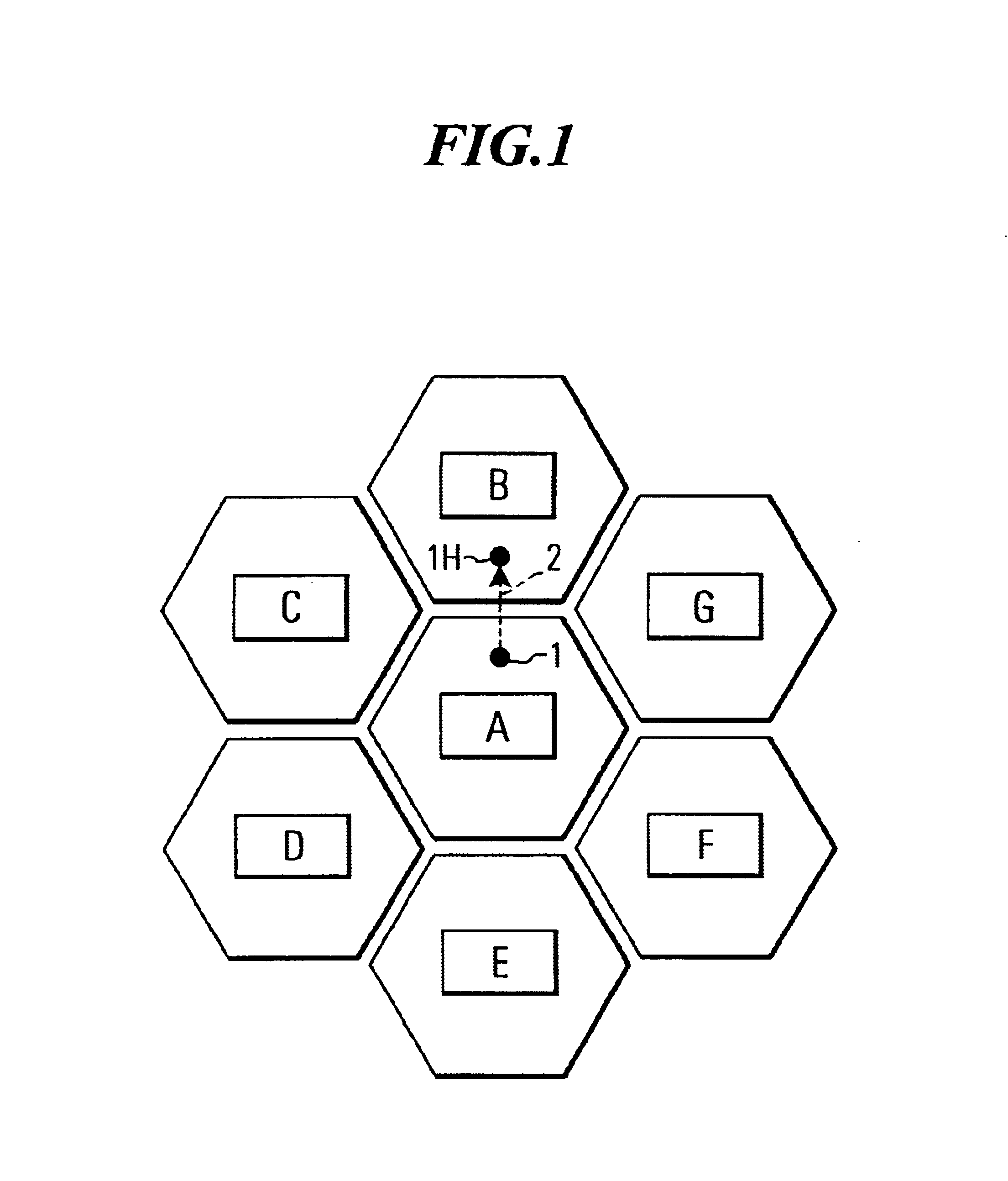Method for the determination of cell borders in cellular data communications systems
a cell data communication and cell border technology, applied in the direction of wireless communication, electrical equipment, selection arrangements, etc., can solve the problems of significant overhead and cost factor for the operator of a mobile communication system
- Summary
- Abstract
- Description
- Claims
- Application Information
AI Technical Summary
Benefits of technology
Problems solved by technology
Method used
Image
Examples
Embodiment Construction
FIG. 1 is simplified schematic illustration of cells A, B, C, D, E, F, and G, in a cellular communications system. Within each cell the base station responsible for communications in that cell is similarly labelled A, B, C, D, E, F, and G. A mobile station 1, initially within the bounds of Cell A communicates by way of base station A. When the mobile station moves from cell A to cell B, as indicated by arrow 2, responsibility for communication with the mobile station (1H) is handed over to base station B as the mobile station crosses the effective communications boundary between cells A and B. The situation is, of course, similar when a mobile station crosses from cell A to cell C, or from any one cell to an adjacent cell. For the purpose of simplification, reference will in general be made in the following only to cells A and B. Means and methods of handling such cell handovers are well known to those skilled in the art.
GPRS, as mentioned above, is one example of a cellular data co...
PUM
 Login to View More
Login to View More Abstract
Description
Claims
Application Information
 Login to View More
Login to View More - R&D
- Intellectual Property
- Life Sciences
- Materials
- Tech Scout
- Unparalleled Data Quality
- Higher Quality Content
- 60% Fewer Hallucinations
Browse by: Latest US Patents, China's latest patents, Technical Efficacy Thesaurus, Application Domain, Technology Topic, Popular Technical Reports.
© 2025 PatSnap. All rights reserved.Legal|Privacy policy|Modern Slavery Act Transparency Statement|Sitemap|About US| Contact US: help@patsnap.com



